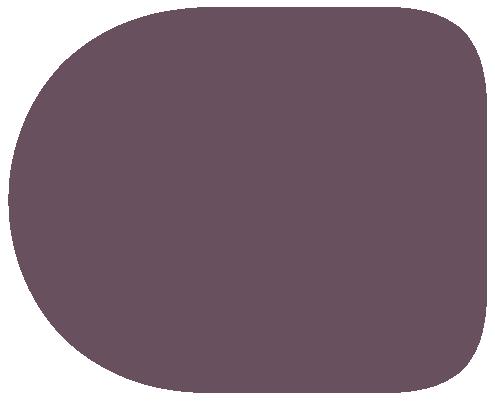

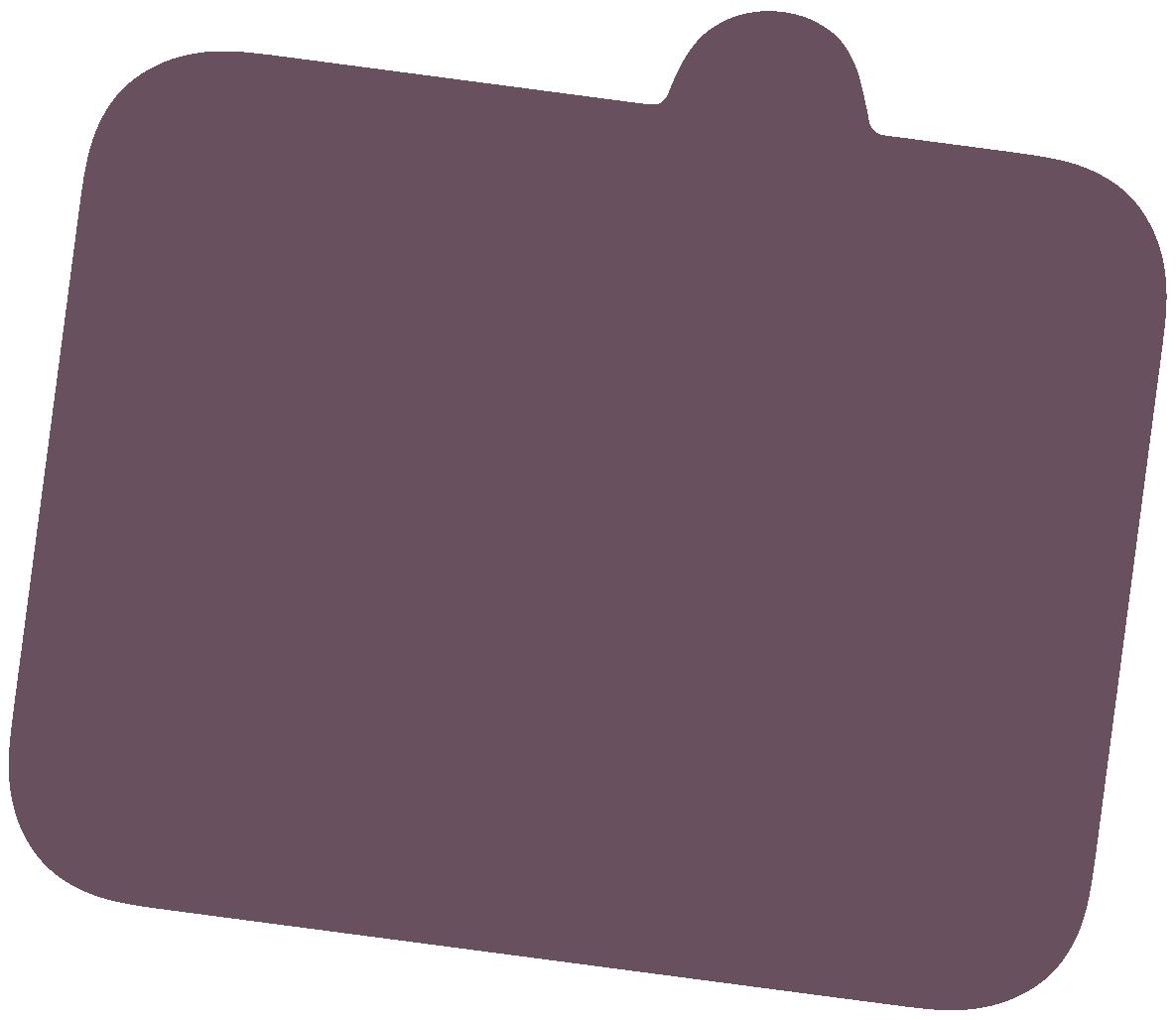






Academic Authors: Muskan Panjwani, Alina Yakunina
Creative Directors: Alena Sizintseva
Book Production: Larisa Pavlenko, Anastasia Voitovich
All products and brand names used in this book are trademarks, registered trademarks or trade names of their respective owners.
© Uolo EdTech Private Limited First edition 2026
This book is sold subject to the condition that it shall not by way of trade or otherwise, be lent, resold, hired out, or otherwise circulated without the publisher’s prior written consent in any form of binding or cover other than that in which it is published and without a similar condition including this condition being imposed on the subsequent purchaser and without limiting the rights under copyright reserved above, no part of this publication may be reproduced, stored in or introduced into a retrieval system, or transmitted in any form or by any means, electronic, mechanical, photocopying, recording or otherwise, without the prior written permission of both the copyright owner and the abovementioned publisher of this book.
Book Title: DinoLab Math Smartbook 3
ISBN: 978-93-89789-06-5
Published by: Uolo EdTech Private Limited
Corporate Office Address: 91Springboard, 3rd Floor 145, Sector 44, Gurugram, Haryana 122003
CIN: U74999DL2020PTC360472
Printed by: Printpro Solutions
All suggested use of the internet should be under adult supervision.
Get access to animated interactive courses, Marathons, Olympiads, and much more — all in the Uolo Learn app!
1. Download the "Uolo Learn" app from Google Pay (Android) or AppStore (iPhone).
2. In the app click scanner to scan the QR code below.
Class:
Name:
School:
3. Follow the instruction in the app to access the content.
DinoLab is an AI-powered self-learning platform that helps children learn Mathematics and other subjects step by step, at their own pace. Students can practise and revise every topic digitally and through printed smartbooks.
The DinoLab Mathematics Smartbook is a companion to the digital course. Each exercise has a QR code linking to the Uolo Learn app for continued practice.
Using AI, DinoLab creates a personalised learning path: it explains the concept, gives guided practice, and adapts if mistakes occur — helping students gain clear understanding.
Digital content is presented as interactive flashcards with 50,000+ gamified exercises and animations, making learning engaging and enjoyable.
DinoLab works in Uolo apps and on multiple devices
To use DinoLab on the web, Smartboards, and in computer labs, your school will receive special access for each student and teacher.
Once the Uolo Learn app is installed and you are logged in, you can access DinoLab. Our Mathematics course is designed with interactive exercises that help children cover the school syllabus step by step, at their own pace.
Compete and win in Marathons!
• Solve problems and earn points
• Leaderboards of your class, school and all of India
• Get achievement certificates
In this Smartbook, you will find QR codes placed next to the exercises. Simply use the QR scanner inside the app to access the interactive content. QR codes in the smartbook
1 2 3
1. Look at the picture and circle the answers. ALL

10 blocks are

100 blocks are
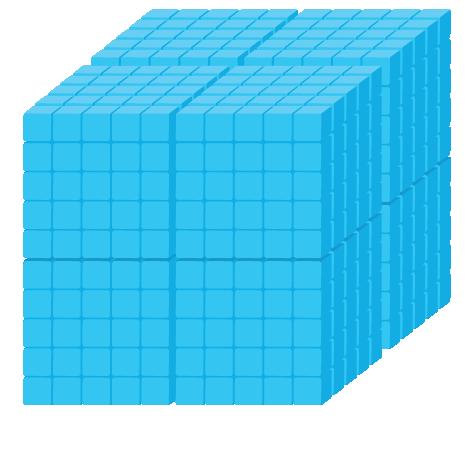
100 blocks are
1 hundred 10 tens 1 ten 10 tens 10 ones 10 hundreds or
10 hundreds 1 thousand
100 ones
1000 ones 1 ten 10 tens or
1 ten 10 hundreds
100 ones or 1 thousand 1 hundred 100 ones
2. Look at the picture and write the total number of blocks.






































3 thousands
7 hundreds 2 tens =
2 thousands 3 hundreds = 2300 thousands hundreds tens ones = thousands hundreds ones =
3. Match the names of places.
438 thousands hundreds tens ones
6379 tens thousands hundreds ones
1690 hundreds tens thousands ones
2045 tens ones hundreds thousands
4. Fill in the blanks.
2869
There are 2 thousands in this number
4512
There are ones in this number
1802
There are hundreds in this number
5182
There are thousand in this number
5. Read the sentence and circle the correct ship.
6. Write the numbers of the lambs.
five thousand eight hundred twenty-one
one thousand nine hundred thirty-seven
four thousand six hundred five
eight thousand seven hundred forty-nine
AND
7. Compare the numbers.
18072945 2954
51506310 6301 8323 83337208 7280
8. Show where to place the train cars in order. Smallest number first!







9. Show where to place the train cars in order. Smallest number first!







10. Show where to place the train cars in order. Largest number first!







11. Show the place of numbers on line.
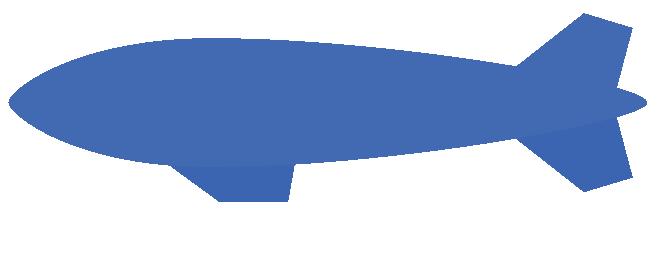




12. Show the place of numbers on line.







13. Fill in the blanks and find which round number is closer.
180 < 183 < 190 180 is closer to 183
< 232 < is closer to 232
< 578 < is closer to 578
< < is closer to 450 ? 460
< < is closer to ? 773 ?
14. Fill in the blanks and find which round number is closer.
237 + 3 = 240
237 – 7 = 230
473 + = 480
473 – = 470 is closer to 473
240 is closer to 237 518 + = 520 518 – = 510 is closer to 518 696 + = 700 696 – = 690 is closer to 696
15. Connect each number to the nearest round number.
16. Round each 3-digit number to the nearest ten. Write
17. Round each 3-digit number to the nearest hundred. Write the rounded number in correct place on the number line.
1. Connect the numbers with a line to make a round number. Write the answer in the box.
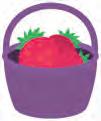
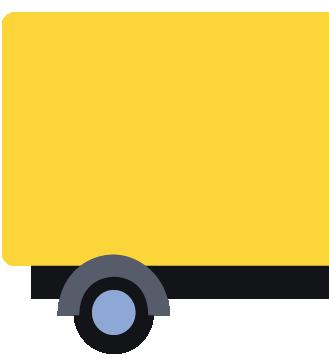











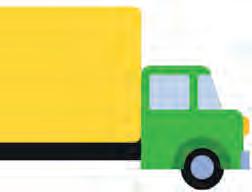










2. Circle 2 numbers to make round numbersin sum, write the answers in the blank.






























3. Transform the numbers and fill in the blanks.
4. Look at the picture and fill in the blanks.
5. Fill in the blanks and write the numbers.
6. Add numbers and fill in the blanks.
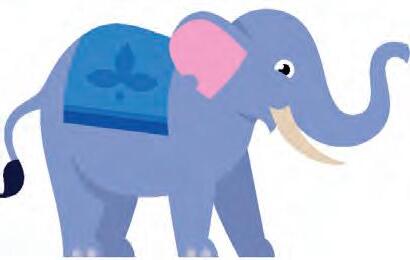

7. Connect the pairs of numbers with a line to make 500.
8. Connect the pairs of numbers with a line to make 1000.
9. Complete these sums without regrouping.
10. Complete these sums with regrouping.
11. Complete these sums with a zero in the answer.
12. Solve the sum by writing the columns.
372 + 23 =
231 + 168 =
711 + 78 =
628 + 160 =
13. Solve the sum by writing the columns.
287 + 313 =
452 + 256 =
688 + 312 =
299 + 501 =
14. Solve the sum by writing the columns.
287 + 168 =
238 + 78 =
618 + 175 =
299 + 171 =
15. Tick ( ) the equal sum and write the answer.
19 + 65 = ? = 70 + 4 = 80 + 4 = 80 – 4
28 + 45 = ? = 70 + 3 = 70 + 2 = 80 + 2
256 + 198 = ? = 450 + 4 = 440 + 4 = 450 – 4
305 + 415 = ? = 700 – 20 = 700 + 20 = 800 – 20
16. Round off the numbers and find the sum. Check whether the answer is close to actual answer.
close / not close close / not close close / not close close / not close
17. Circle the correct solution of the problem.
112 rabbits were walking at the edge of the forest. 12 rabbits ran away. How many rabbits are left at the edge of the forest?
a. b. c.
112 – 12 = 100 (r.)
212 – 112 = 100 (r.)
112 + 12 = 124 (r.)

Sonia made 131 paper lanterns, and Garima made 119. How many lanterns did the girls make in total?
a.
131 – 119 = 12 (l.)
b.
121 + 109 = 230 (l.)
c.
131 + 119 = 250 (l.)

18. Solve the problems and fill in the blanks.
Nina read the first book for 125 days, and the second one for 42 days longer. How many days did Nina read the second book?
+ = (d.)
Answer: Nina read the second book for days.
Peter has 1000 stamps in his collection, and Vasya has 375 fewer. How many stamps does Vasya have in his collection?
– = (st.)
Answer: Vasya has stamps.

19. Look at the picture and solve the problem.
How many pages are there in these two books together?
+ = (p.)
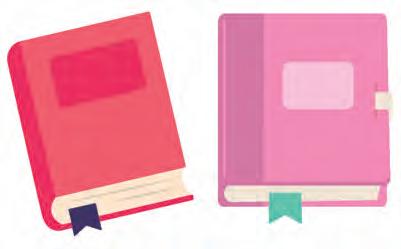
Answer: There are a total of pages in the two books.
How many berries are in total?
423 p.258 p. + = (b.)

372 b.215 b.
Answer: Kirit picked a total of berries.
20. Solve the problems and write the answers.
During the tour, Sonia took 128 photos. And Garima took 37 photos more. How many photos did Garima take?
Answer:

Mary drew 185 geometric shapes. Gita drew 122 shapes. How many more shapes did Mary draw than Gita?
Answer:
Kiri solved 415 math problems. And Kaustubh solved 118 more problems. How many math problems did the children solve in total?
Answer:
In the first semester, Sonia learned 305 vocabulary words. In the second semester, she learned 127 more words. How many vocabulary words did Sonia learn in the second semester?
Answer:
1. Transform the numbers and fill in the blanks.
2. Fill in the blanks and write the numbers.
3. Add numbers and fill in the blanks the examples.




4. Complete these subtraction without regrouping.
5. Complete these subtraction with one regrouping.
6. Complete these subtraction with two regrouping.
7. Solve the examples by writing the columns.
673 – 152 =
905 –703 =
678 – 453 =
421 – 181 =
392 – 139 =
902 – 404 =
176 – 98 =
491 – 103 =
372 – 189 =
8. Complete these subtraction from a number with zero in the middle.
9. Solve the examples by writing the columns. 903 – 239 = 402 – 209 = 607 – 362 =
10. Complete these subtraction.
11. Solve the examples.
500 – 398 =
490 – 107 =
200 – 98 =
Subtraction of 3-digit Numbers
12. Tick ( ) the equal sum and write the answer.
85 – 39 = ? = 40 + 4 = 50 – 4 = 50 + 1
43 – 15 = ? = 30 – 3 = 30 + 2 = 30 – 2
523 – 198 = ?
= 200 + 125 = 200 – 25 = 500 – 125
765 – 450 = ? = 400 + 85 = 400 – 85 = 400 – 50
13. Round off the numbers and find the difference. Check whether the answer is close to actual answer.
close / not close
close / not close close / not close close / not close
14. Circle the correct solution of the problem.
First, 68 rabbits were walking at the edge of the forest. Then 44 more rabbits ran to them. How many rabbits are at the edge of the forest now?
68 + 44 = 112 (r.)
68 – 44 = 24 (r.)
70 + 40 = 110 (r.) a. b.
c.
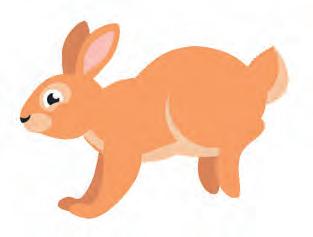
Sonia made 250 paper lanterns. She gave 130 of them to her friends. How many lanterns does Sonia have left?
a.
250 + 130 = 380 (l.)
b.
250 – 130 = 120 (l.)
c.
200 – 100 = 100 (l.)

15. Solve the problems and fill in the blanks.
Nina read the first book for 100 days. She read the second book for 85 days less. How many days did Nina read the second book? + = (d.)
Answer: Nina read the second book for days.
Peter has 650 stamps in his collection. Vasya has 120 stamps more. How many stamps does Vasya have in his collection?
Answer: Vasya has stamps.
16. Look at the picture and solve the problem. – = (st.)
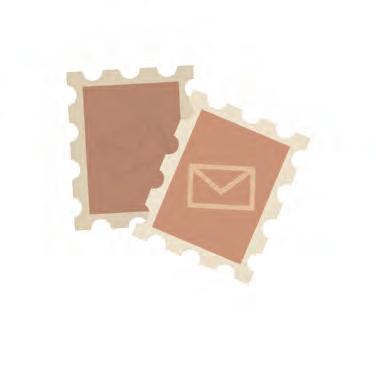
How many more pages does the first book have than the second? 500 p.
– = (p.)
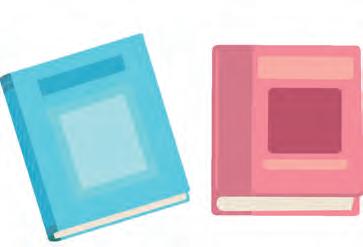
p.
Answer: The first book has pages.
There are 115 fewer berries in the second basket than in the first. How many berries are in the second basket?
– = (b.)

Answer: There are berries in the second basket.
17. Solve the problems and write the answers.
During the tour, Sonia took 250 photos. And Garima took 115 photos fewer. How many photos did Garima take?
Answer:
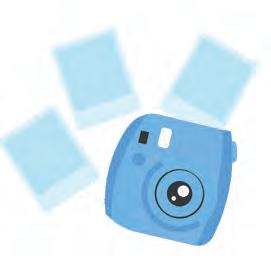
Mary drew 185 geometric shapes. Gita drew 122 shapes. How many shapes did they draw together?
Answer:
Kiri solved 500 math problems. Kaustubh solved 118 problems fewer than Kiri. How many problems did they solve altogether?
Answer:
In the first semester, Sonia learned 500 vocabulary words. In the second semester, she learned 127 words fewer. How many words did she learn in both semesters?
Answer:
1. How many legs do the cows have? Fill in the blanks.

4 + 4 + 4 = 4 × 3 =


2. How many pencils are there in the box? Fill in the blanks.

9 + 9 + 9 = 9 × =


3. How many legs do the dogs have? Fill in the blanks.
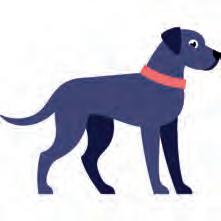

4 + 4 + 4 + 4 + 4 = × 5 =



4. How many legs do the stools have? Fill in the blanks.




3 + 3 + 3 + 3 = × =
5. How many legs do the spiders have? Fill in the blanks.
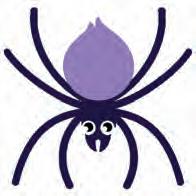


8 + 8 + 8 = × =
6. How many ears do the rabbits have? Fill in the blanks.





2 + 2 + 2 + 2 + 2 = × =
7. Write the number of crystals.
8. Fill in the blanks.
7 + 7 + 7 + 7 + 7 = × 5 =
6 + 6 + 6 = 6 × =
8 + 8 + 8 + 8 = × =
3 + 3 + 3 + 3 + 3 + 3 = × =
9. Circle all expressions that match with the picture.
10. Fill in the multiplication table.
11. Cross out ( ) the incorrect examples.
12. Fill in the blanks.
1.Circle every equal part of the expression to cross the river.
2. Connect the equal expressions with a line.
× (31 + 14)
× (14 + 22)
× 13 + 4 × 12
3. Complete these multiplication.
4. Solve the expressions.
× 14 =
× 8 = 12 × 8 = 4 × 13 =
× 7 =
× 4 =
× 31 = 3 × 18 = 49 × 2 = 23 × 3 =
5. Round off the numbers and find the product. Check whether the answer is close to actual answer.
6. Read the problem. Circle all the correct expressions that solve it.
There were 4 tables at a party. Each table had 13 guests. How many guests were at the party in total?
7. Read the problem. Circle the correct check.
Maria bought 3 packs of cookies for ₹56 each and 2 chocolate bars for ₹45 each. How much money did she pay in total?
Cookies:
2 × ₹56 = ₹112
Chocolate:
3 × ₹45 = ₹135
Total: ₹247
Cookies: 3 × ₹56 = ₹168
Chocolate: 2 × ₹45 = ₹90
Total: ₹258
Cookies: 2 × ₹56 = ₹112
Chocolate: 2 × ₹45 = ₹90
Total: ₹202
1. Match the pictures with the number sentences by drawing a line.





























































18 ÷ 3 = 6 15 ÷ 5 = 3 10 ÷ 2 = 5
12 ÷ 6 = 2
6 ÷ 2 = 3
2. Write an expression and solve it.
I have 14 fish, divided equally into 2 groups. How many fish are in one group?
14 ÷ 2 =
I have 12 shells, divided equally into 6 groups. How many shells are in one group?
÷ 6 =
I have 12 fish, divided into 3 fish in each group groups. How many groups do i have?
÷ =
I have the same number of groups, but with 5 fish in each. How many fish do I have in total?
I have 4 groups with fish
× =
3. Connect with a line the name of component with its correct place.
Divisor Dividend Quotient Product Multiplier
4. Circle all expressions where multiplication is equal to 8.
5. Circle all expressions
6. Connect the division and multiplication expressions that check each other.
28 ÷ 4 = 7 5 × 9 = 45
18 ÷ 3 = 6 7 × 4 = 28
45 ÷ 9 = 5 4 × 8 = 32
32 ÷ 8 = 4 3 × 7 = 21
21 ÷ 7 = 3 6 × 3 = 18
7. Write the checking expressions.
Multiplication
20 × 4 = 80
9 × 5 = 45 Division
80 ÷ 20 = 4
60 ÷ 2 = 30 64 ÷ 8 = 8
1. Circle all numbers that can be divided by 3.
2. Circle all numbers that can be divided by 4.
3. Find the quotient by decomposing it into small terms.
4. Complete these division.
1. Look at the pictures and fill in the table.
pic. 1 pic. 2
pic. 3
triangles
pic. 1 2
pic. 2
pic. 3
and Patterns
circles rectangles squares
0
2. Fill in the table about shapes.
Let`s find out about sides and corners in different shapes

sidescorners
triangles square circle
Circle is different. It does not have any sides or any corners.

3. Connect the figure and the type with a line.
closed figures
open figures
4. Connect the figure and the term with a line. triangle pentagon quadrilateral heptagon hexagon
5. Paint over all closed figures.
6. Look at the pictures and fill in the blanks. Underline the terms in the conclusion.
Opposite sides of a square/rectangle are equal.
All sides of a square/rectangle are equal.
7. Fill in the blanks about the figures. A cylinder has 1 curved face and 2 flat faces, 2 curved edges, 0 corners.
flat faceflat facecurved face
A cube has faces, edges, corners.
left side face right side face front face back face bottom facetop face

A sphere has curved face, 0 corners, 0 edges.
A cuboid has faces, corners, edges.
8. Connect the correct view.
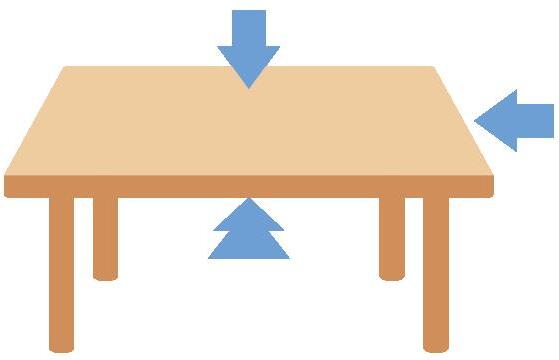


9. Connect the correct type of view with a line.


10. Connect the numbers and terms with a line.
11. Color the 3-D shapes by the colours.
12. Which shape does this thing look like?
Tick ( ) one shape in each row.


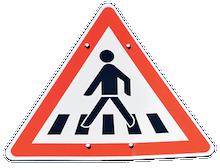
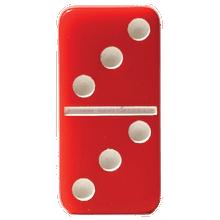

circle square triangle
triangle rectangle circle
triangle circle square
circle triangle rectangle
circle rectangle square

triangle circle rectangle
13. Tick ( ) objects that look like a square.

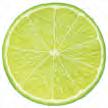
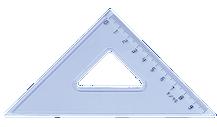


Tick objects that look like a circle.

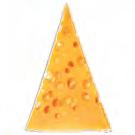



Tick objects that look like a triangle.

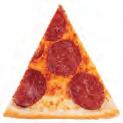

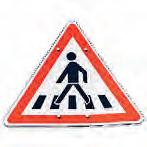

Tick objects that look like a rectangle.
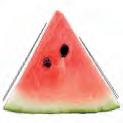
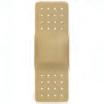



1. Draw the line segments 3 cm, 5 cm and 8 cm long.
2. Measure the line segments and write their length. 1 cm
Length, Weight and Capacity
3. Draw a line segment equal to the sum of the length of the given line segments, write its length.
4. Draw a line segment equal to the sum of the length of the given line segments, write its length.
5. What is shown? Underline correct term for each picture.
6. Circle the segment 4 cm long.
7. Circle the segment 3 cm long.
8. Circle the segment 7 cm long. 1 cm 1 cm
9. Circle all standard units.
10. Draw a rectangle with sides 7 cm and 5 cm long. sharpener pencil
1 cm
11. Find the length of the objects, write the answers.
12. Circle all standard weight measuring tools.
13. Connect the pictures with correct scales with a line.
14. Look at the scales and write the weight of the objects and animals in the blanks.
15. Circle what is heavier.



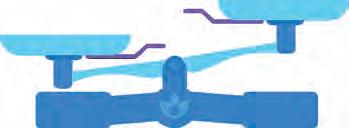
16. Circle what is lighter.

same

same

same

carrots same
17. Find the weight of the animals.


18. Find the weight of ostrich egg.


19. Find the weight of the objects and fill in the blanks.
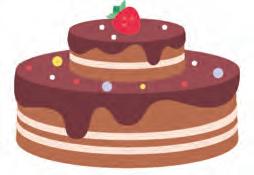



20. Fill in the blanks.

















The weight of the apple is equal to blocks
The weight of the toy is equal to blocks
21. Count and fill in the blanks.
There are 2 L of milk, L of juice and L of water.
There are L of soap, L of washing powder and L of shampoo.
22. Circle the standard unit.
cup bucket litre glass
23. Look at the picture and write how many cups and glasses are in the jar.
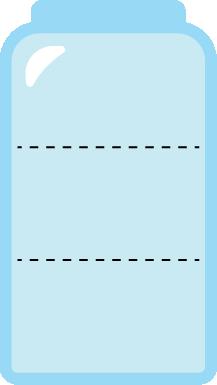
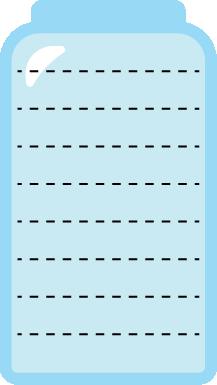





Put the comparison signs


24. Mark 2 water cans in the line.
so that the total is
25. Look at the pictures and count.

There are 2 liters of juice left in the jar a different pair totalling 7 litres
so that the total is 6 litres
How much juice is left in the jar after filling the glasses?

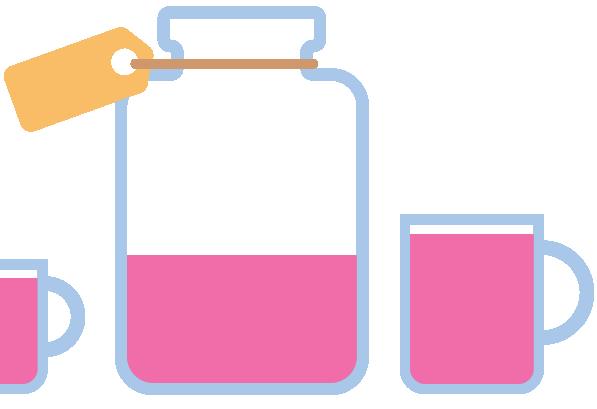
There is L
How much juice will remain in the right vessel after filling the left?


There will be 4 L 7L 2 L 2 L 3L 6L 1 L 4L 5L 2 L
There will be L
1. Connect the clock pictures with it names.
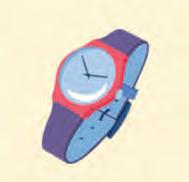

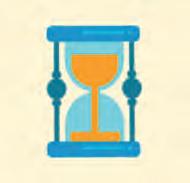


2. Match the pictures with it names of day time. night morning evening daytime

3. What time is it? Write the answer in the blanks.
4. Write the time the clock shows.
5. Circle the clock that shows 3:30. Circle the clock that shows 4:45.
that shows 12:10.
Circle the clock that shows 5:50.
6. What time is it? Look at the clock and mark the classes that are starting now!
8:30 English 9:20 Mathematics 10:10 Science 11:05 Music Time table
9:20 Science 11:05 Art 12:00 Music 12:55 Physical Education Time table
table
9:20 Mathematics 10:10 Music 11:05 Art 12:00 Science
7. Convert.
1 hr = min
1 hr 35 min = min
69 min = hr min
8. Draw the hands on the clock.
9. Convert in table.
10. Underline the correct unit of time.
Vacation at sea lasted 3 weeks / minutes / days / hours
Travelling by train from Guwahati to New Delhi takes 32 weeks / minutes / days / hours
The world record for the 100 meters is about 10 seconds / minutes / days / hours
Pranav did his homework in 50 seconds / minutes / days / hours
11. Compare the expressions. Fill in the blanks with.
< = >
1 days 2 hr 25 hr
6 hr 16 min 5 hr 65 min
190 sec 3 min 20 sec
4 weeks 3 days 31 days
4 hr 45 min 275 min
56 hr 2 days 9 hr
12. Solve the problem and write the answer.
The shuttle bus sets off on its route at 15:40. It takes 2 h 20 min for it to reach its destination, it stops for 30 minutes and comes back to where it started from in 1 h 50 min. What time does the bus arrive at the starting point?
Answer: hr min
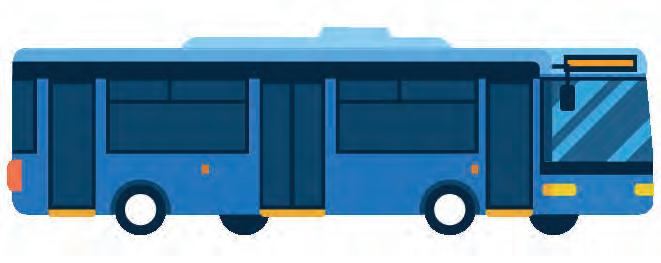
Convert.
1 min = sec
125 sec = min sec
2 min 50 sec = sec
1 day = hr
2 days 2 hr = hr
36 hr = day hr
1 week = days
1 week 5 days = days
23 days = weeks days
14. Look at the Calendar and fill in the blanks. There
There are months in a year.
There
15. Circle all month which have 31 days.
January February March
April May June
July August September
October November December
16. Circle all month which have 30 days only.
January February March
April May June
July August September
October November December
17. Look at the calendar in question 14 and connect dates with days of the week.
Sunday Saturday Wednesday Friday 29 January 1 February 2 February 7 February Tuesday Thursday Monday Sunday
March 3 April 4 April 12 April
1. Circle what we can pay
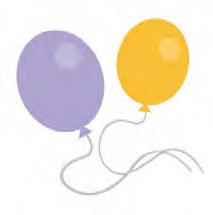






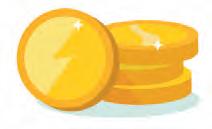
2. Connect the money and its correct name with a line.


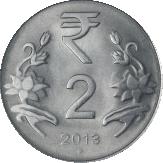

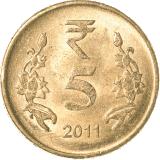
3. Circle all Indian money.
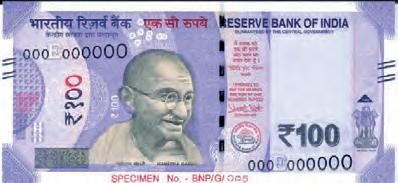


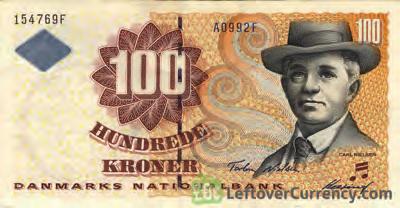

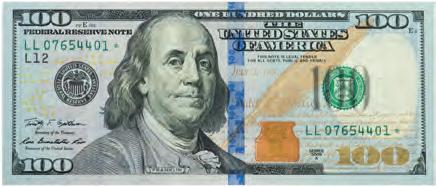
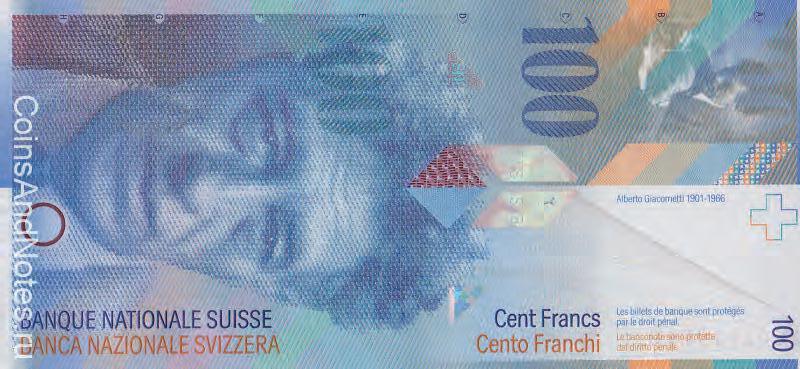







4. How much money is in each wallet? Write in the blanks.








5. Circle how much money is in each jar.







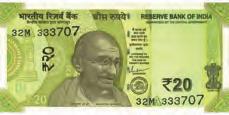





6. Read the comics and find the change.
I have ₹68 in my wallet
I have ₹122 in my wallet
Ice-cream costs ₹36
– ₹36 = ₹
– ₹ = ₹
Ice-cream costs ₹25
7. Fill in the table with how many banknotes and coins are needed for the sum.

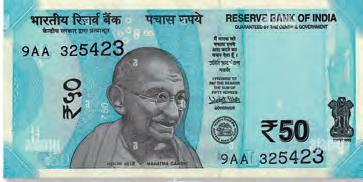



8. Prepare a bill for the following items purchased from a supermarket.
9. Check the bill. Find and correct the mistakes in the Amount column.
10. Prepare a bill for the following items purchased from a supermarket.
11. Convert the following amounts.
₹1.00 = 100 paise
₹88.75 = paise
6250 paise = ₹
₹20.30 = paise
9850 paise = ₹
12. Solve the problem .
A movie ticket costs ₹480. A combo of popcorn and a cold drink costs ₹220. If Ravi has a ₹1000 note, how much change will he get back after buying one ticket and one combo?
Change = ₹ – ₹ = ₹ 1) 2) Answer: ₹
Total cost = ₹ + ₹ = ₹
13. Convert the following amounts.
Long ago, 1 rupee = 100 paise = 1000 cowrie shells.
How many cowrie shells are equal to ₹5.75?
₹5.75 = shells
How many cowrie shells are equal to 220 paise?
220 paise = shells
14. Solve the problem.
Rice costs ₹65 per kg, lentils (dal) cost ₹110 per kg, and cooking oil
costs ₹180 per bottle. If Meera has ₹500, can she buy 2 kg of rice, 1 kg of lentils, and 1 bottle of oil? If yes, how much money will be left?
1. Look at the pictures and fill in the blanks. 1 3 What fraction of the Austrian flag is white?
1 This is a marine flag meaning “Man overboard”. What fraction of the flag is red?
1 This is a marine flag meaning “I need a tow”. What fraction of the flag is black?
1 What fraction of the Hungarian flag is green?
1
This is a marine flag meaning “Turn right”. What fraction of the flag is blue?
2. Connect with a line each figure with the names the shaded parts.
3. How much of figure is shaded? Write the fractions. One third One quarter One half 5 7
4. Shade the part of the circle that matches the fraction.
5. Circle
6. Connect the parts of fraction with a line.
Denominator
Numerator
7. Connect the pairs of fractions and the matching terms with a line.
Fraction bar 3 7 fraction with different numerator fraction with equal numerator
8. fill in the blanks with correct sign =
9. Circle the correct fraction.
10. Circle the whole part of fraction.
11. Circle what fraction of birds is red.



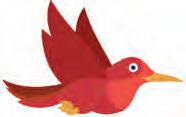

12. Circle what fraction of days is weekend.
13. Circle what fraction of fruits is apples.
14. Colour the part of square.
Car
1. Write the place of cars in the race — fill in the table.
Place
*Less time means faster!
Boat
2. Write the place of boats in the race — fill in the table.
Place
3. Read and mark in the table with a +
Simon likes to play football and do drawing. Lilly draws and sings
4. Look at the picture and fill in the table by the number of the figures.
5. Look at the table and answer the questions — fill in the blanks.
The children added a + sign on the pets they own
Who has only one pet?
Who has all types of pets? and don’t have rabbits
How many sunny days?
What is the highest temperature for three days?
What is tomorrow's night temperature?
Who
6. Look at the table and mark the correct answer.
All activities that children do are marked with a + sign in the table.
7. Look at the picture and fill in the table.
Tree height, m
Leaf width, cm

Birch treeMaple

My name is Parth. I am 7 years old. And I am in 3 class. My favourite subject is music. 14 m 15 m 5 cm 8 cm
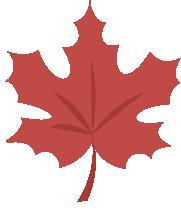
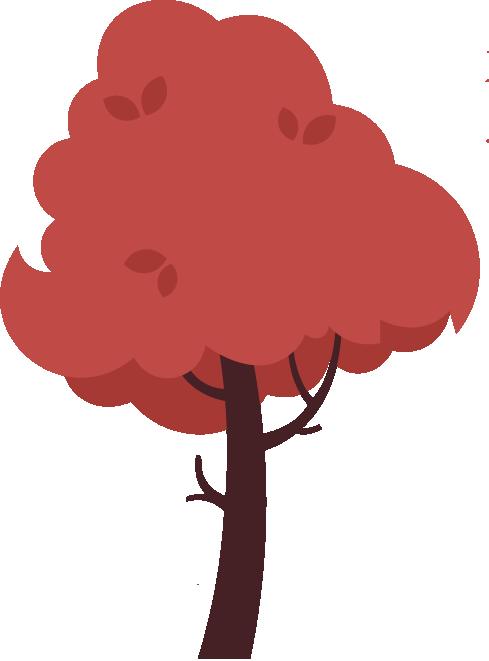
8. Read the text and fill in the table.
NameAgeClassFavourite subject
Boy
Girl
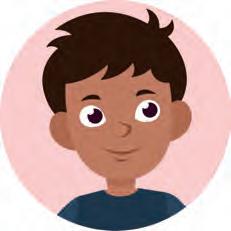
I am Tanvi. I am 9 years old. I am in 3 class. And I love reading.
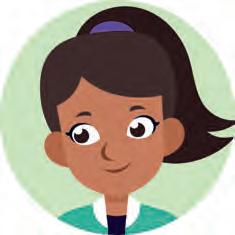
9. Look at the picture and answer the questions.








MondayTuesdayWednesday
How many cupcakes were sold on Wednesday?
How many cupcakes were sold total on three days?
Who make the most number of goals?
How many goals make Mohit?
10. Draw the chart like the number of fish in the left table.
11. Draw the chart like the number of sugar in the left table.
12. Draw the chart like the number of vegetables in the right picture.
13. Draw the chart like the number of toys in the right picture.

15. Draw the chart if Vikram sang 3 songs, Kartik — 5 songs and Danish — 2.

16.
1. Place Value
Page 1
1. 100 ones or 10 tens
10 hundreds or 1 thousand
Page 2
2. 3720; 1 thousand, 7 hundreds, 2 ones
2 thousands, 2 hundreds, 9 tens, 3 ones
Page 3
3. thousands, hundreds, tens, ones thousands, hundreds, tens, ones
Page 4
4. There are 2 ones in this number
There are 8 hundreds in this number
There are 5 thousand in this number
5. 7300
Page 5
6. 5821, 1937 4605, 8749
Page 6
7. > , >, <
8. 1567, 1576, 1650, 6507, 6570
Page 7
9. 2034, 2340, 2403, 3240, 4302
10. 8921, 8912, 8291, 8192, 8129
Page 8 11.








Page 9




13. 230 < 232 < 240, 230 is closer to 232
570 < 578 < 580, 580 is closer to 578
450 < 457 < 460, 457 is closer to 460
770 < 773 < 780, 770 is closer to 773
Page 10
14. 518 + 2 = 520, 518 – 8 = 510, 520 is closer to 518
473 + 7 = 480, 473 –3 = 470, 470 is closer to 473
696 + 4 = 700, 696 – 6 = 690, 700 is closer to 696
Page 10
Page 11
16. 433 430, 567 570, 950 951, 398 400 458 500, 988 1000, 100 121, 200 222
12












Page 13 2. 17 + 23 = 30, 48 + 2 =












=
Page 15
16
Page 17
9. 978, 895, 836, 769
387, 789, 694, 557
10. 794, 670, 992, 819 908, 823, 923, 554
11. 604, 505, 509, 907,
700, 1000, 600, 390
Page 18
12. 395, 399, 789, 788
13. 600, 708, 1000, 800
14. 455, 316, 793, 470
Page 19
15. 19 + 65 = 84
28 + 45 = 70 + 3 = 73
256 + 198 = 450 + 4 = 454
305 + 415 = 700 + 20 = 720
Page 20
16. 48 + 33 = 81, 50 + 30 = 80, close
127 + 289 = 416, 130 + 290 = 420, close
351 + 468 = 819, 350 + 470 = 820, close
Page 21
17. 112 – 12 = 100, 131 + 119 = 250
18. 125 + 42 = 167 (d.)
Page 22
1000 – 357 = 643 (st.)
19. 423 + 258 = 681 (p.), 372 + 215 = 587 (b.)
Page 23
20. 165 photos, 307 shapes, 533 problems, 432 words
Page 24
1. 30 – 20 = 10, 400 – 100 = 300
2. 118 – 5 = 113, 167 – 5 = 162, 206 – 5 = 201
Page 25
3. 652 – 10 = 642, 642 – 20 = 622, 622 – 30 = 592
4. 321 – 1 = 320, 321 – 10 = 310, 310 – 200 = 110
Page 26
4. 620, 103, 211
5. 113, 691, 416, 324
6. 289, 176, 298,
Page 27
7. 521, 202, 225, 240, 253, 498, 78, 388, 183
Page 28
8. 188, 216, 189, 258 269, 275, 285, 265 9. 664, 193, 245
Page 29
10. 261, 412, 222, 163 255, 418, 161, 329
11. 102, 383, 102
Page 30
12. = 30 – 2, = 200 + 125, = 400 – 85
Page 31
13. 48 – 39 = 9, 40 – 30 = 10, close
127 – 103 = 24, 120 – 100 = 20, close
451 – 408 = 43, 450 – 400 = 50, not close
Page 32
14. 68 – 44 = 24 (r.)
250 – 130 = 120 (l.)
15. 100 – 85 = 15 (d.)
Page 33
650 + 120 = 770
16. 500 – 275 = 225 (p.)
372 –115 = 257 (b.)
Page 34
17. 250 – 115 = 135 photos
185 + 122 = 307 shapes
500 + 118 = 618
500 – 127 = 373, 500 + 373 = 873 words
Page 38 8. 7 × 5 = 35 6 × 3 = 18 8 × 4 = 32 3 × 6 = 18 9. 8 × 2, 3 × 3 = 9
Page 39 10.
4. Multiplication Tables
6. 10 Page 35 1. 12 2. 18 3. 20
Page 40 11.
Page 36 4. 12 5. 24
Page 37
7. 2 × 5 = 10 3 × 6 = 18 4 × 7 = 28 5 × 5 = 25
Page 41 1. 2 × (31 + 14)
3 × 30 = 80 50 =




































+
×
4 × (13 + 12)
+
4 × (20 + 6) 42 + 66
Page 42
3. 92, 588, 184, 380 235, 168, 360, 680 4. 54 76 98 98 69 85 88 84 96 96 52 93
Page 43
5. 154, 20 × 7 = 140, close 177, 3 × 60 = 180, close 94, 50 × 2 = 100, close
Page 44
6. 13 × 4, 13 + 13 + 13 + 13
7. Total: ₹258



Page 46 2. 7, 12 ÷





















Page 45 1. Page 47 3. 4. 3 × 8 = 24, 8 × 2 = 16 5. 6 ÷ 2 = 3, 6 ÷ 3 = 2
7. Page 48

Page 49
1. 30, 9, 60
2. 8, 40, 80
3. 68 ÷ 4 = (40 + 28 ) ÷ 4
68 ÷ 4 = 40 ÷ 4 + 28 ÷ 4
68 ÷ 4 = 10 + 7
68 ÷ 4 = 17
Page 50
84 ÷ 6 = 60 ÷ 6 +24 ÷ 6 = 10 + 4 = 14
75 ÷ 5 = 50 ÷ 5 + 25 ÷ 5 = 10 + 5 =15
96 ÷ 8 = 80 ÷ 8 + 16 ÷ 8 = 10 + 2 = 12
4. 76 ÷ 4 = 19, 84 ÷ 2 = 42, 96 ÷ 3 = 32, 428 ÷ 4 = 107, 486 ÷ 3 = 162, 702 ÷ 3 = 234
Page 51 1. 2 3 4 0 3 2 2 0 3 0 2 4 Page 52 2. 3 3 4 4 4 4
Page 53 3.
closed figures open figures
54 4. triangle pentagon quadrilateral heptagon hexagon
Page 56
6. side 2 = 3 cm
side 1 = 5 cm, side 2 = 5 cm
Opposite sides of a rectangle are equal. All sides of a square are equal.
Page 57
7. 6 faces, 8 corners, 12 sides
Page 58
1 curved face
6 faces, 8 corners, 6 sides
8.


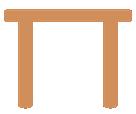
Page 59
9.


Page 60
Page 60 11.
Page 61
12. circle triangle rectangle circle rectangle
Page 62 13.









Page 63 1.
Page 64
3. 8 cm
4. 8 cm
Page 65
5. 5 cm, 4 cm
Page 66
7.
8.
Page 67
9. centimetre, metre
Page 68
11. 8 cm, 6 cm, 3 cm, 15 cm
Page 69 12. 13.
Page 70
14. 6 kg, 7 kg, 3 kg 9 kg, 2 kg, 4 kg
Page 71
15. melon, same, melon
Page 72
15. melon, chameleon, carrots
Page 73
17. 5 kg, 3 kg
18. 2 kg, 1 kg
Page 74
19. 6 kg, 6 kg
20. 7 blocks, 6 blocks
Page 75
21. 3 L, 3 L
22. 3 L, 1 L, 3 L
Page 76
23. 9 cups, 4 glasses <,<
Page 77
24. 3 L + 4 L, 2 L + 4 L
Page 78
10. Time

25. 3 L, 3 L Page 80




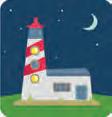
3. 3 hours, 7 hours, 11 hours 4. 1 hr 15 min, 4 hr 40 min
6. 9:20 Mathematics, 12:55 Physical Education, 11:05 Art Page 83
82
Page 85 10. weeks, hours, seconds, minutes
12. 20 hr 20 min Page 87
13. 60 sec, 2 min 5 sec, 170 sec 24 hr, 26 hr, 1 d 12 hr 7 days, 12 days, 3 weeks 2 days Page 88 14. 365 or 366 days, 12 months, 52 weeks Page 89
March, May, July, August, October, December
April, June, September, November
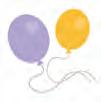































Page 99 11. 8875 paise
paise
Page 99 12. ₹ 480 + ₹ 220 = ₹ 700 ₹ 1000 – ₹ 700 = ₹ 300
Page 100
13. ₹ 5.75 = 5750 shells
220 paise = 2200 shells 14. Cost of rice = 2 × ₹ 65 = ₹ 130 Total = ₹ 130 + ₹ 110 + ₹ 180 = ₹ 420 Money left = ₹500 – ₹ 420 = ₹ 80
Fractions
Page 109
1. 5, 2, 4, 1, 3 2. 2, 4, 5, 1, 3 3. + + –– + + Page 110
5. Ahana, Palak, Ahana, Vinod
Page 111 2, +24, +13 6. Jai, Sport
Page 112 7. 14 15 5 8
8. Parth, 7, 3, music Tanvi, 9, 3, reading
Page 113 9. 2, 8 Mayank, 3
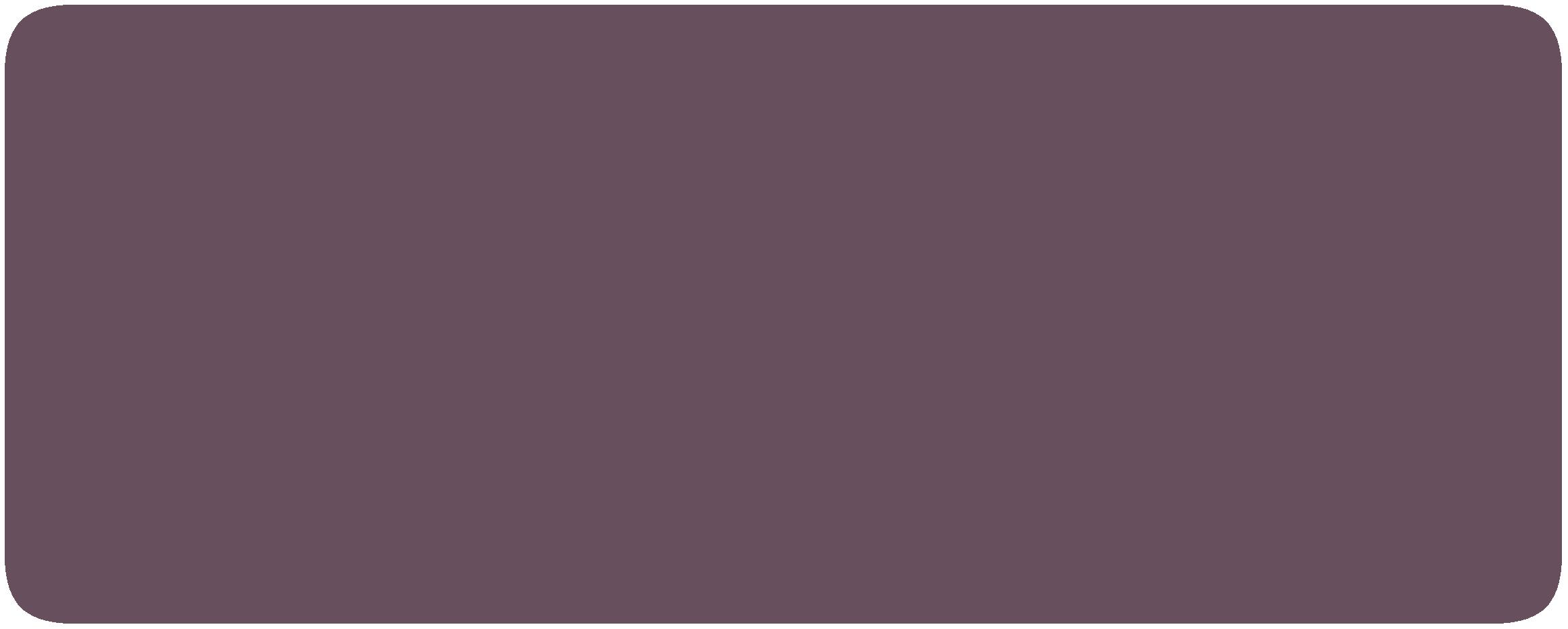


ISBN: 978-93-89789-06-5
